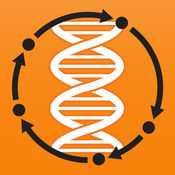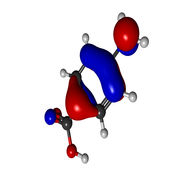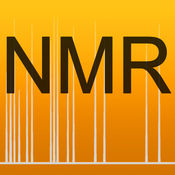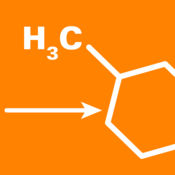-
Category Education
-
Rating 3.8
-
Size 8.8 MB
ACS Central Science is a fully open access journal published by the American Chemical Society. Download the app today to get the journal on your iPhone or iPad. In addition to publishing articles of exceptional scientific quality, originality, and significance; the journal also publishes a diverse selection of reviews, interviews and commentary material.
ACS Central Science alternatives
BioCyc Pathway/Genome Databases (formerly EcoCyc)
The BioCyc app provides mobile access to the BioCyc collection of 5,000+ pathway/genome databases, including MetaCyc, HumanCyc, YeastCyc, and many more. The BioCyc app includes the highly curated EcoCyc database for E. coli K-12, with content distilled from more than 28,000 publications. Features: Browse, search, and save your favorite genes Gene and protein sequence information, protein feature annotations Regulation summary diagrams describe regulatory influences on a gene Metabolic pathway diagrams Gene Ontology terms Links to other popular biological databases
-
size 4.0 MB
Angewandte Chemie International Edition
A leading chemistry journal is now available on your iPad and iPhone. Fresh from the newsstand, Angewandte Chemie International Edition brings you a stimulating, high-impact mixture of Review Articles, Highlights, Communications, and more. Note that any unused portion of a free trial period, if offered, will be forfeited when you purchases a subscription.
WebMO: Molecule Editor, Viewer, and Computational Chemistry Interface
WebMO allows users to build and view molecules in 3-D, visualize orbitals and symmetry elements, lookup chemical information and properties from external databases, and access state-of-the-art computational chemistry programs. WebMO is recommended for students and faculty in high school, college, and graduate school who desire mobile access to molecular structures, information, and calculations. WebMO capabilities include:- Build molecules by drawing atoms and bonds in a 3-D molecular editor, or by speaking the name (e.g., aspirin)- Optimize structures using VSEPR theory or molecular mechanics- View Huckel molecular orbitals, electron density, and electrostatic potential- View point group and symmetry elements of molecules- Lookup basic molecular information, including IUPAC and common names, stoichiometry, molar mass- Lookup chemical data from PubChem and ChemSpider- Lookup experimental and predicted molecular properties from external databases (NIST, Sigma-Aldrich)- Lookup IR, UV-VIS, NMR, and mass spectra from external databases (NIST, SDBS)- Capture high-resolution molecular images- Save and recall molecular structures locally- Export and import structures via emailWebMO is also a front-end to WebMO servers (version 14 and higher):- Supports Gaussian, GAMESS, Molpro, MOPAC, NWChem, ORCA, PQS, PSI, Quantum Espresso, VASP, Q-Chem, and Tinker computational chemistry programs- Submit, monitor, and view calculations- View formatted tabular data extracted from output files, as well as raw output- Visualize geometry, partial charges, dipole moment, normal vibrational modes, molecular orbitals, and NMR/IR/UV-VIS spectra
-
rating 5.0
-
size 19.5 MB
Orange NMR
App to predict 13C and 1H NMR spectra: draw a structure to see its spectrum. The accuracy of the algorithm is about 1.9 ppm for 13C and 0.21 ppm for 1H (RMSD=3.4 and 0.31 ppm correspondingly).The number of heavy atoms in structure to predict for free is restricted to 12 atoms. 2009, 97, 91
-
size 17.8 MB
ReactionFlash
Want to refresh your memory on named chemical reactions before an exam or a group meeting? Get all the details with ReactionFlash as a great way to learn named reactions, understand their mechanisms and view examples published in peer-reviewed literature. Reaxys and ReactionFlash are trade marks of RELX Intellectual Properties SA, used under license.
-
size 55.0 MB




